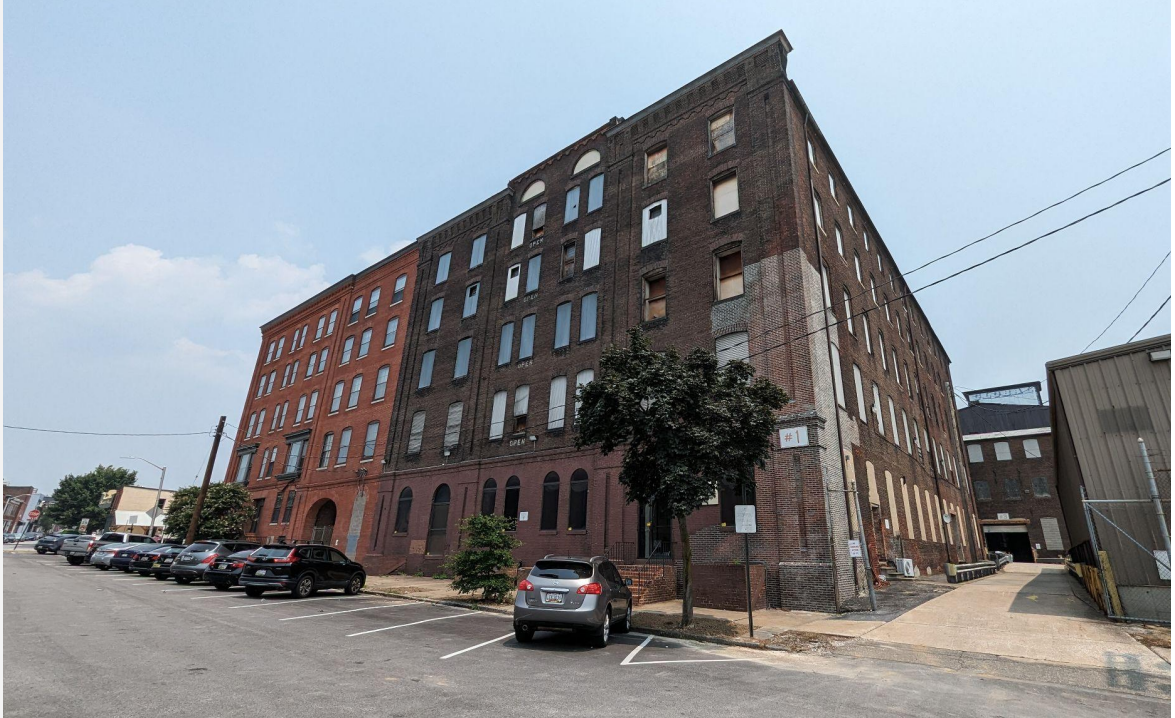The complex challenges of the current affordable housing crisis center around low inventory, high interest rates, and the large gap between housing costs and income. Coupled with disruptions from the recent COVID-19 pandemic, finding housing is a challenge for many. A 2024 study showed that half of American renters are cost-burdened, spending more than 30 percent of their income on housing. There is common rhetoric that affordable housing is at odds with historic preservation. However, preservationists and affordable housing advocates can work together to create vibrant, inclusive, and economically diverse communities. Here are five ways preservationists can support affordable housing, ensuring that historic neighborhoods remain both livable and affordable.
1. Advocate for Rehabilitation & Adaptive Reuse
U.S. Census Bureau estimates show there are 144 million total housing units in the U.S. and approximately 15 million are vacant. Imagine if all of those were rehabbed and available for a family to live in? Furthermore, adaptive reuse, the process of repurposing old buildings for new uses, is a powerful tool for addressing housing needs. By converting historic buildings into affordable housing units, rehabbing vacant upper floors, or subdividing a large house into more units, existing buildings can provide much-needed living spaces.
How to Support Rehabilitation & Adaptive Reuse:
- Policy Advocacy: Work with local governments to create policies and incentives that encourage rehabilitation & adaptive reuse. The City of Los Angeles adopted a downtown adaptive reuse ordinance in 1999 which has resulted in more than 12,000 housing units, and efforts are underway to expand it citywide.
- Technical Assistance: Offer expertise and resources to property owners interested in rehabilitation and adaptive reuse. This can include providing guidance on maintaining historical integrity, navigating regulatory requirements, and accessing funding sources.
- Public Awareness Campaigns: Promote the benefits of rehabilitation and adaptive reuse to the public and potential developers. Highlight successful projects that have preserved historical character while providing affordable housing.
2. Promote Zoning Reform
Zoning reform is recognized as a major ingredient to correcting the housing crisis. Enabling more units on a property, at a small, incremental scale much like existing historic districts is key. Preservationists can advocate for these policies in historic districts, ensuring that new developments respect the historical context while contributing to housing affordability.
How to Support Inclusionary Zoning:
- Collaboration with Policymakers: Work with local officials to draft and implement incremental zoning changes that apply to historic areas. Ensure these policies balance preservation goals with the need for affordable housing.
- Community Engagement: Engage with community members to build support for inclusionary zoning. Educate residents on how these policies can enhance the neighborhood’s diversity and sustainability without compromising its historical character.
- Case Studies: Showcase examples of successful small scale projects in historic districts, demonstrating how they can maintain architectural integrity while providing affordable housing.
3. Leverage Historic Tax Credits
Historic tax credits can make it financially feasible to rehabilitate historic buildings for affordable housing. By combining these credits with other funding sources, such as low-income housing tax credits, preservationists can help create viable projects that serve both preservation and housing goals.
How to Leverage Historic Tax Credits:
- Educational Workshops: Host workshops for developers, property owners, and community organizations to educate them on the availability and application process for historic tax credits.
- Financial Partnerships: Encourage partnerships between preservation organizations and affordable housing developers. These collaborations can help navigate the complexities of combining different funding streams.
- Advocacy for Expanded Credits: Advocate for the expansion of historic tax credit programs to include more incentives for affordable housing projects. This can increase the pool of available funding and make more projects feasible.

4. Support Accessory Dwelling Units (ADUs)
Accessory Dwelling Units (ADUs), also known as granny flats or in-law suites, are secondary housing units on single-family lots. ADUs can provide affordable housing options while preserving the character of historic neighborhoods. Preservationists can advocate for policies that allow and encourage the development of ADUs in historic areas, as well as ensuring existing ADUs can be rehabilitated into housing units.
How to Support ADUs:
- Zoning Reform: Advocate for zoning changes that permit ADUs in historic districts by-right. Ensure that these regulations include design guidelines that respect the historical context.
- Design Assistance: Provide resources and technical assistance to homeowners interested in building ADUs. This can include design templates, materials recommendations, and guidance on maintaining historical integrity.
- Success Stories: Highlight examples of ADUs that have been successfully integrated into historic neighborhoods. Share these stories with the community to demonstrate the potential benefits of ADUs.
Photo: Reminiscent of the Sears Catalog for homes in the early 20th century, the City of South Bend adopted a pre-approve housing plans.

5. Foster Community Land Trusts (CLTs)
Community Land Trusts (CLTs) are nonprofit organizations that acquire and manage land for the benefit of the community, ensuring long-term affordability and stewardship. Preservationists can partner with CLTs to preserve historic properties and provide affordable housing.
How to Foster CLTs:
- Partnerships: Collaborate with existing CLTs to incorporate historic properties into their portfolios. Preservation organizations can provide expertise in maintaining historical integrity, while CLTs ensure affordability.
- Land Acquisition: Advocate for policies that support the acquisition of land and historic properties by CLTs. This can include funding for land purchases or donations of underutilized historic buildings.
- Public Education: Educate the public and policymakers about the benefits of CLTs. Highlight how they can preserve historical character, prevent displacement, and provide long-term affordable housing.
Conclusion
Preservationists and affordable housing advocates share a common goal: creating sustainable, vibrant communities. By embracing rehabilitation and adaptive reuse, promoting zoning modifications, leveraging historic tax credits, supporting ADUs, and fostering CLTs, preservationists can play a crucial role in addressing the affordable housing crisis. These strategies not only protect Maryland’s architectural heritage but also ensure that historic neighborhoods remain inclusive and accessible to all residents. Working together, preservationists and housing advocates can achieve the dual goals of preservation and affordability, creating a brighter future for Maryland’s communities.

